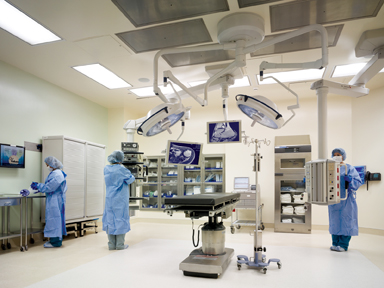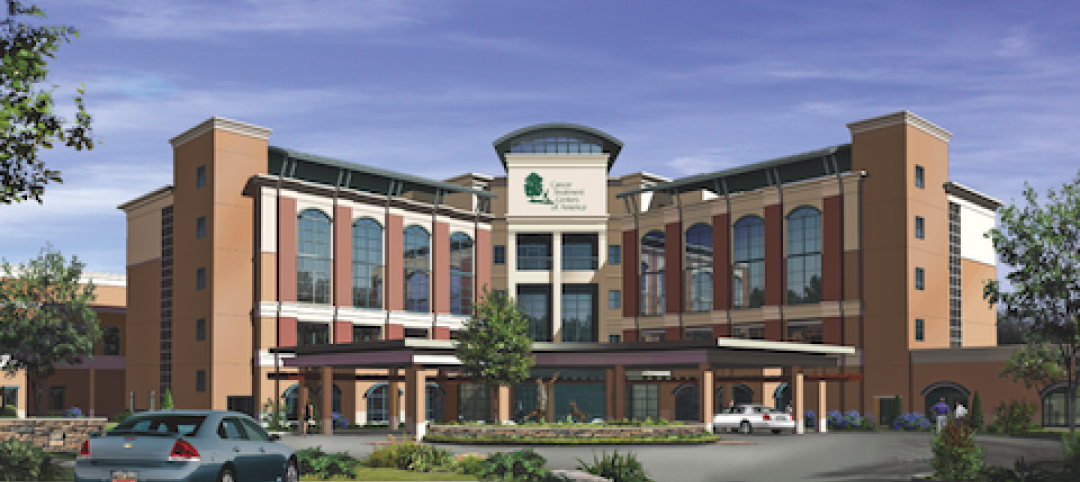The state of healthcare in our nation today is at the brink of significant change, as the passing of healthcare reform impacts everything from how health systems operate to the use of technology in managing and providing care. To help healthcare leaders navigate the increasingly complex environment, DPR Construction (“DPR”), a national technical builder specializing in highly complex and sustainable projects, conducted a year-long study to gather the perspectives of more than 40 CEOs, owners, designers and management consultants. The study found that health economics, healthcare delivery and buildings of the future are three key areas that will become increasingly important to the health industry over the next 10 years.
Using a mix of in-person interviews and online surveys with DPR customers and other leading organizations, DPR’s “Future of Healthcare” study also identified 10 areas of change that will be integral to shaping the industry’s future. These include:
- Accountable Care Organizations
- Pay-for-Performance
- Aging Population
- Electronic Medical Records
- Healthcare Worker Shortage
- Sophisticated Diagnostic and Treatment Equipment
- Handheld Computers and Portable Diagnostic Equipment
- Medical Homes
- Holistic, Patient-Centered Environment
- Evidence-Based Medicine
Health economics
Among study participants, many noted that systems are not fully prepared for the increasing population of aging individuals. When healthcare reform does get fully implemented, 32 million more insured U.S. citizens will skyrocket demand. Both will contribute to an already stressed system, making health economics one of the most critical elements of the industry’s future. While new and upgraded technologies entering the market will put strain on health providers’ and systems’ budgets, being able to deliver health that is patient-centric, centralized and vertically integrated will become increasingly important and help deliver better care while reducing costs.
“We have worked with leading healthcare providers for many years, and we clearly see that 2012 is heading into an unprecedented era in managing health economics. Cash flow is more strained than ever due to continued economic uncertainty and a slow recessionary recovery, making cost cutting a priority for health system executives,” said Hamilton Espinosa, DPR’s National Healthcare Group Leader. “The perspectives of these executives reinforced what we’ve been hearing: providers are seeking to deliver the best care while striving to be cost effective.”
Health delivery
According to the study’s findings, hospitals of the future will only serve acute-care patients. Outpatient facilities will deliver less critical care for less cost, while serving broader regional sites. Detroit-based Beaumont Health System, an 18-year recipient of the “Best Hospitals” ranking by U.S. News & World Report, was one of the study’s participants and discussed the evolution. “The hospital will become just for the highest acuity care. The focus needs to shift to home health, primary care and outpatient care,” said Gene Michalski, CEO of Beaumont Health System.
Additionally, health information technology will remain the backbone of delivery, helping to ensure care is delivered more efficiently to lower overall cost. “We are 20 years behind on IT infrastructure, and IT improvements are taking capital that might otherwise have gone to facilities at this time,” noted study participant John Kemper, CEO of KLMK Group, a leading provider of innovative facility solutions to healthcare owners for more than 25 years.
Buildings of the future
With limited access to capital, many noted that fewer new projects will take place and more renovations will rise, largely driven by the need to meet patient satisfaction standards over the long-term. At the same time, better technology will drive overall innovation in technical construction – meaning buildings of the future will be adaptable, both in terms of patient needs and technology. “As health technologies become more sophisticated and simultaneously require less physical space, server and data center support needs will increase,” said DPR’s Espinosa. “Future building will need to accommodate these trends, with increased emphasis around design and system integration to save on costs.”
Additional operational insights
DPR’s Future of Healthcare study also found that 17% of respondents agreed the formation of Accountable Care Organizations – organizations of healthcare providers who agree to be accountable for the quality, cost and overall care of those enrolled in their program – would have the greatest impact over the next five years, followed by pay-for-performance and the growth of the nation’s aging population (tied at 14 percent). Additionally, growth in implementation of universal platforms of care that offer customizable experiences will also be important, while new kinds of outpatient services will provide many of the medical functions previously confined to the hospital.
For additional study results and findings visit: http://www.dpr.com/assets/docs/the-future-of-healthcare.pdf?/futureofhc. +
Related Stories
| Oct 13, 2010
Maryland replacement hospital expands care, changes name
The new $120 million Meritus Regional Medical Center in Hagerstown, Md., has 267 beds, 17 operating rooms with high-resolution video screens, a special care level II nursery, and an emergency room with 53 treatment rooms, two trauma rooms, and two cardiac rooms.
| Oct 13, 2010
Cancer hospital plans fifth treatment center
Construction is set to start in December on the new Cancer Treatment Centers of America’s $55 million hospital in Newnan, Ga. The 225,000-sf facility will have 25 universal inpatient beds, two linear accelerator vaults, an HDR/Brachy therapy vault, and a radiology and imaging unit.
| Oct 13, 2010
New health center to focus on education and awareness
Construction is getting pumped up at the new Anschutz Health and Wellness Center at the University of Colorado, Denver. The four-story, 94,000-sf building will focus on healthy lifestyles and disease prevention.
| Oct 13, 2010
Community center under way in NYC seeks LEED Platinum
A curving, 550-foot-long glass arcade dubbed the “Wall of Light” is the standout architectural and sustainable feature of the Battery Park City Community Center, a 60,000-sf complex located in a two-tower residential Lower Manhattan complex. Hanrahan Meyers Architects designed the glass arcade to act as a passive energy system, bringing natural light into all interior spaces.
| Oct 12, 2010
Holton Career and Resource Center, Durham, N.C.
27th Annual Reconstruction Awards—Special Recognition. Early in the current decade, violence within the community of Northeast Central Durham, N.C., escalated to the point where school safety officers at Holton Junior High School feared for their own safety. The school eventually closed and the property sat vacant for five years.
| Sep 13, 2010
Palos Community Hospital plans upgrades, expansion
A laboratory, pharmacy, critical care unit, perioperative services, and 192 new patient beds are part of Palos (Ill.) Community Hospital's 617,500-sf expansion and renovation.
| Sep 13, 2010
China's largest single-phase hospital planned for Shanghai
RTKL's Los Angles office is designing the Shanghai Changzheng New Pudong Hospital, which will be the largest new hospital built in China in a single phase.
| Sep 13, 2010
'A Model for the Entire Industry'
How a university and its Building Team forged a relationship with 'the toughest building authority in the country' to bring a replacement hospital in early and under budget.
| Sep 13, 2010
Data Centers Keeping Energy, Security in Check
Power consumption for data centers doubled from 2000 and 2006, and it is anticipated to double again by 2011, making these mission-critical facilities the nation's largest commercial user of electric power. With major technology companies investing heavily in new data centers, it's no wonder Building Teams see these mission-critical facilities as a golden opportunity, and why they are working hard to keep energy costs at data centers in check.
| Aug 11, 2010
Green Guide for Health Care launches pilot program, looks for participants
In first quarter 2010, the Green Guide for Health Care, in collaboration with Practice Greenhealth, is launching a one-year Green Guide for Health Care Operations Pilot Program for healthcare organizations engaged in any or all aspects of green operations initiatives, based on Green Guide v2.2 Operations section.
















